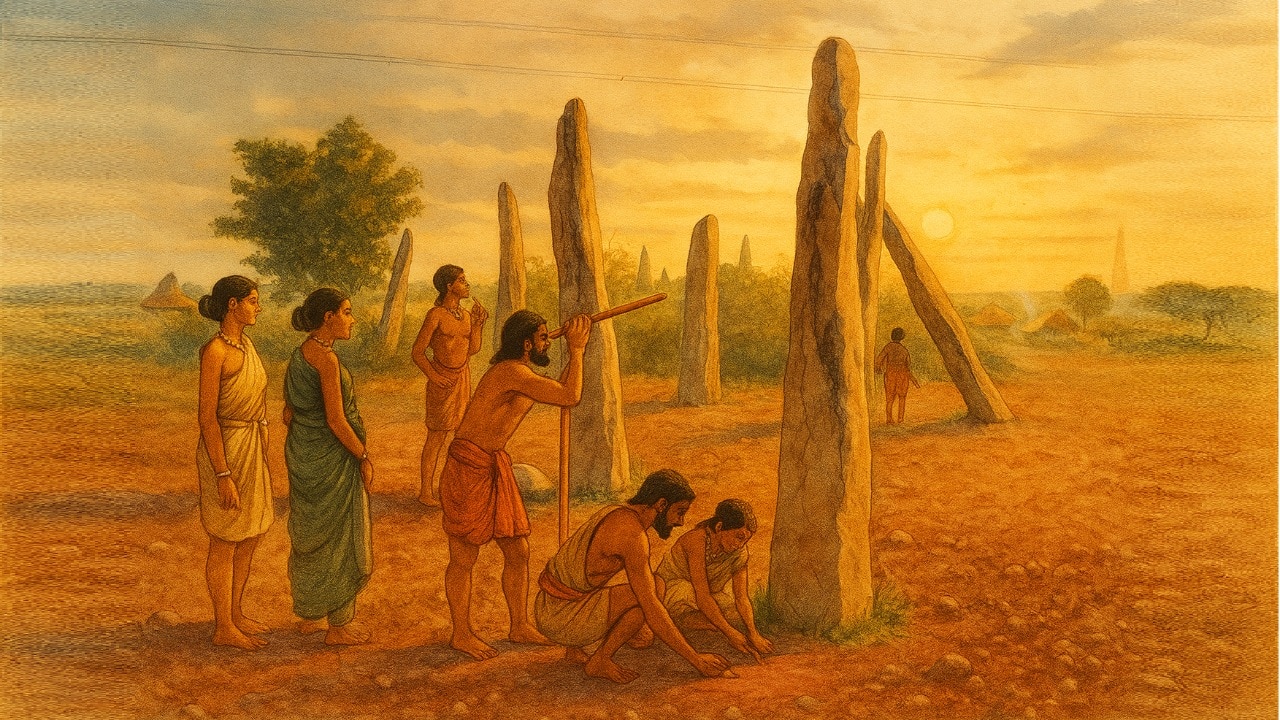In the quiet village of Mudumal in Telangana’s Narayanpet district, a group of ancient stone sentinels rise from the red earth. These tall, weathered menhirs, dating back roughly 3,500 to 4,000 years, have long puzzled archaeologists and locals alike.
But recent research suggests that these stones were not random memorials or boundary markers at all.
They were part of an ancient astronomical system — a way to read the sky long before telescopes or written calendars existed.
advertisement
At sunrise, the silhouettes of these giant menhirs stretch across ochre soil, standing tall like ancient guardians. They are silent, monumental. For centuries, they watched the sky.
The site, spread across roughly 89 acres, holds around 80 towering menhirs—some 10 to 15 feet high—and nearly 1,500 smaller boulders laid out in striking patterns: circles, lines and clusters. About 25 circular formations, each 15 to 20 metres across, dot the landscape.
Recent studies place these menhirs, and thousands of aligned stones and boulders, at 3,500 to 4,000 years old.
Continue Reading on India Today
This preview shows approximately 15% of the article. Read the full story on the publisher's website to support quality journalism.
